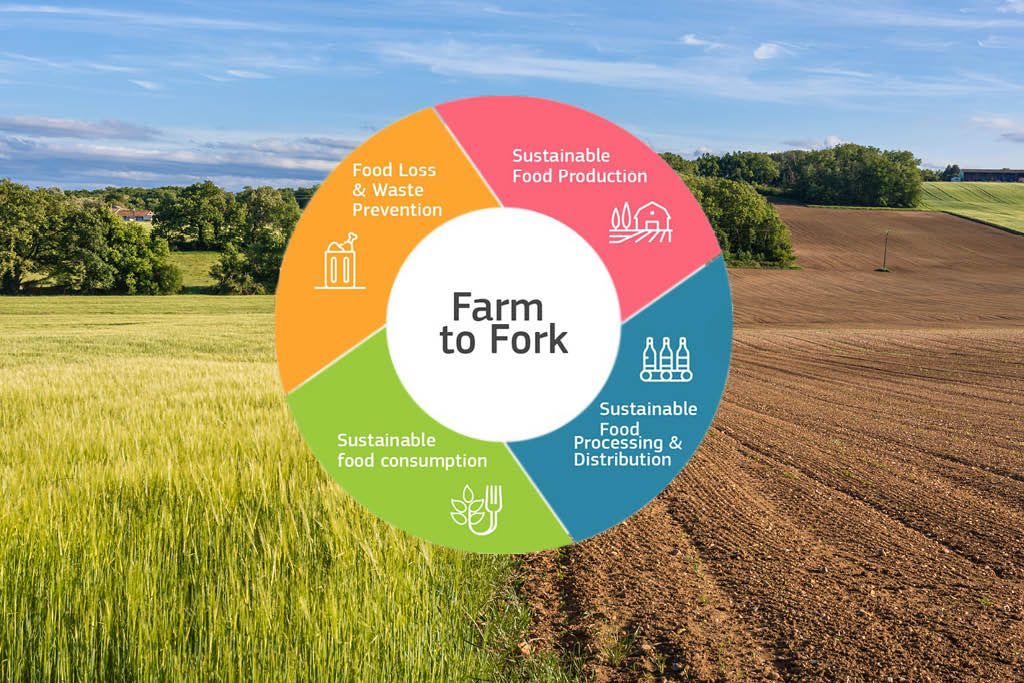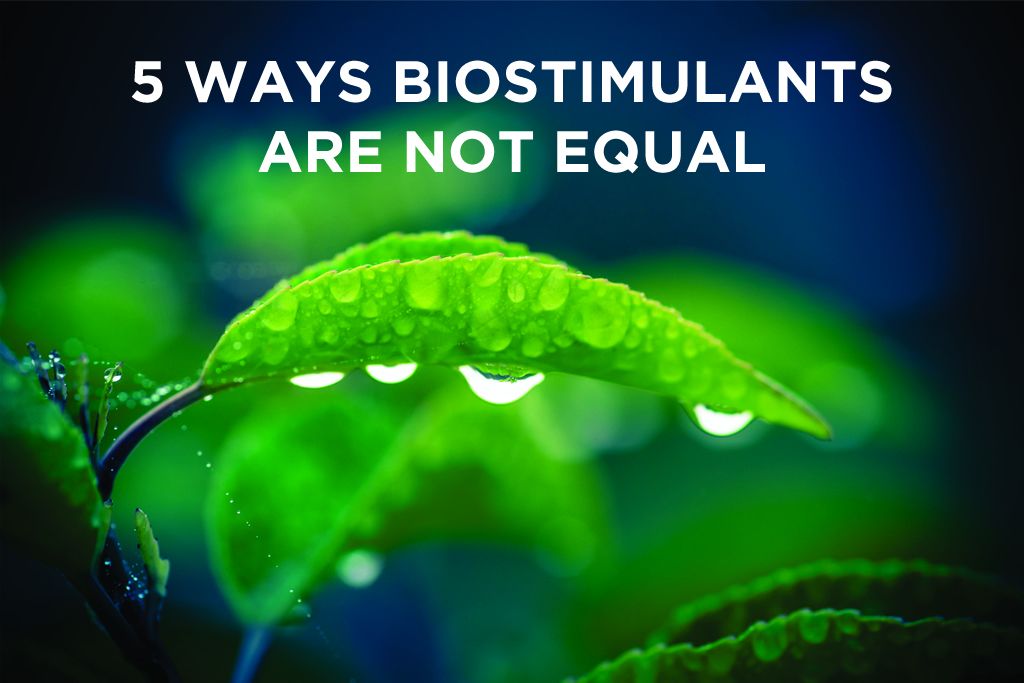BLOG #15

The “Farm to Fork Strategy” is the part of the European Green Deal dealing with the ways to ensure more healthy, fair, and sustainable food systems.
However, let us start from the beginning; what is the European Green Deal?
It is a common strategy to transform the Union into a modern, resource-efficient and competitive economy where growth and development are driven by sustainability². How to do so? This will happen by turning climate and environmental challenges into opportunities across all policy areas, and by making the transition just and inclusive for all.
The aim is that The EU will be climate neutral in 2050. Quite challenging; what do you think?
The European Green Deal is divided into different areas, the most important one being the Farm to Fork (F2F) Strategy released on the 20th of May 2020. This is where biostimulants have their place and importance. However, first, let us go through why the EU decided to implement this Strategy and the different areas F2F is addressing.
There is a desperate need for robust and resilient food systems, especially after the COVID-19 experience (a challenging period in terms of production, logistics, and agri-food chains in general), and sustainability is the foundation of every future development of the sector. No food system is resilient if it is not sustainable².
The F2F is aimed at fastening the transition towards more sustainable food systems which should :
· Have a neutral or positive environmental impact (e.g.using renewable resources)
· Help to mitigate climate change and adapt to its impacts, reduce GHG emissions
· Preserve biodiversity (An EU Biodiversity Strategy for 2030 had been released ³ on the same day as the F2F.)
· Ensure food security, nutrition, and public health, making sure that everyone has access to sufficient, safe, nutritious, sustainable food
· Preserve affordability of food while generating fairer economic returns, fostering the competitiveness of the EU supply sector, and promoting fair trade ²
Sustainable development of food systems also means greater opportunities in terms of the use of new technologies, scientific researches, value creation for stakeholders, actors of the supply chain, and also end-consumers. Moreover, it is an opportunity to improve food quality and consumption patterns and habits, leading to a consequent reduction of diet-related diseases and healthcare costs. European diets are not in line with national recommendations, often because the healthier option is not available or is far too expensive. If they were, the environmental footprint of food systems would be reduced.

Figure 1- https://ec.europa.eu/food/farm2fork_en
F2F Strategy is also the central point in the EU program to achieve the United Nations’ Sustainable Development Goals (SDGs) addressing the global challenges we face, including those related to poverty, inequality, climate change, environmental degradation, peace, and justice. The 17 Goals are all interconnected, and the quite challenging aim is to achieve them all by 2030.
Figure 2 – https://www.un.org/sustainabledevelopment
The F2F Strategy represents a great opportunity for biostimulants, in particular, according to these objectives outlined in the Strategy which contribute to the ensurance of sustainable food production:
1. Reduce by 50% the use and risk of chemical pesticides by 2030.
One of the ways listed by the Commission to achieve this goal is to “Promote greater use of safe alternative ways of protecting harvests from pests and diseases.”² A stronger, balanced, and vigorous plant can better resist and react to diseases, the use of biostimulants, thus being a great help in the reduction of pesticide use.
2. Reduce fertilizer use by at least 20% by 2030, by reducing nutrient losses by at least 50%, while ensuring no deterioration of soil fertility.
One of the four characteristics defining the biostimulant products according to the new EU Regulation 2019/1009 on fertilizers is exactly ‘improving plant nutrient use efficiency.”⁴ Biostimulants can help the plant to enhance and optimize its assimilation of nutrients present in the soil, reducing loss by leaching and massive fertilizers use. Promoting the use of biostimulants will help farmers better manage the use of nutrients throughout the plant lifecycle, especially concerning nitrogen and phosphorus, the two most present elements in the environment causing air, soil, water pollution, and climate impacts such as biodiversity loss. Biostimulants are also important because their use can help restore soil fertility and vitality by stimulating soil micro-organisms development and multiplication. Soil health is a major challenge for biodiversity preservation as well.
3. Ensure 25% of total farmland under organic farming by 2030.
The organic food market is growing, so organic farming must be further promoted to ensure both supply and demand. It has a positive impact on biodiversity, and it is an opportunity for the sector to expand and attract younger people. Again, in an efficient agronomic practice designed for organic farming, the use of biostimulants (allowed in organic farming) at different stages of the plant lifecycle is essential to help growth, development, nutrient use efficiency, tolerance to abiotic stress, improvement of crop quality traits.
To sum up, feeding a growing population in a sustainable way and through resilient food systems requires, for multiple reasons, the use of biostimulant products.
The F2F Strategy is, together with the EU Regulation 2019/1009 on fertilizer products, a great example of how the EU is at the forefront concerning good agricultural practices, which include the use of biostimulants in order to reach global environmental goals. The aim of this Strategy is, therefore also to make the EU food system a global standard for sustainability, being the EU the biggest importer and exporter of agri-food products.
The Commission will review this Strategy by mid-2023 to assess whether the action taken is sufficient to achieve the stated objectives or if additional action is necessary. However, of course, the transition to sustainable and resilient food systems is possible only through the commitment of the whole population: from public authorities to private sector actors across the entire food value chain, from non-governmental organizations to scientific sector players, down to every single EU citizen.
If you are interested in knowing more about the F2F Strategy and the European Green Deal, you should not miss the next F2FEU Digital Roundtable hosted by EBIC and New Ag International: the 14th of October at 3 PM CEST. More information to come on www.biostimulants.eu and www.newaginternational.com.
(¹.) https://ec.europa.eu/info/strategy/priorities-2019-2024/european-green-deal_en
(².) https://ec.europa.eu/food/farm2fork_en
(³.) https://eur-lex.europa.eu/legal-content/EN/TXT/?qid=1590574123338&uri=CELEX:52020DC0380
(⁴.) https://eur-lex.europa.eu/legal-content/EN/TXT/PDF/?uri=OJ:L:2019:170:FULL&from=EN
















